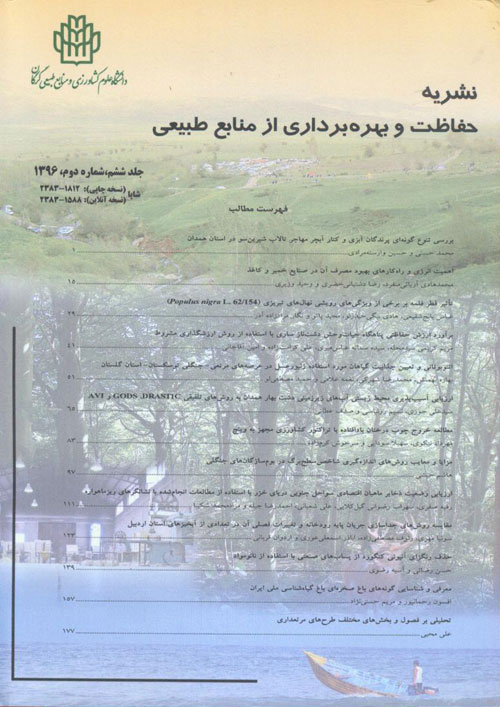Spatial analysis of the degree of land suitability for agricultural and natural resources activities using FAO Model and GIS
Author(s):
Abstract:
Certain types of coordination and compliance of a particular type of land with specific uses are one of the fundamental prerequisites for achieving sustainable development of land. Today, there are extensive models for determining optimum use with respect to land and its ability. In this research project, for spatial organization and sustainable management of land use of Khodabandeh, the FAO model and geographic information systems (GIS) are used. For this purpose, first the type and degree of major constraints for each land use in the area, including irrigated agriculture, rainfed agriculture, pasture, grazing, tree planting and orchard are identified and then the maps were drawn by GIS. With overlaying the existing layers of the present situation and recommended land use, the final GIS maps were produced on which the proportion degrees of current land use for different types of uses were identified. Afterwards according to the amount and intensity of the main constraints, all land suitability classes per unit are compared for use survival and the best degree of suitability identified. Research results indicate that the largest suggested land use in Khodabandeh area, with the 55 percent of area, is allocated for rainfed agriculture. The pasture and grazing land with an area equal to 21 percent of the area, conservative and arid land with 16% and irrigated agriculture with 8 percent are respectively in the next rankings.
Keywords:
Land use , FAO Model , GIS , Land suitability , Khodabandeh
Language:
Persian
Published:
Journal of Conservation and Utilization of Natural Resources, Volume:1 Issue: 3, 2013
Page:
9
https://magiran.com/p1165544
مقالات دیگری از این نویسنده (گان)
-
Explaining the Scenarios of Establishing a Smart City Based on Internet of Things in Mashhad Metropolis
Aliakbar Anabestani *, , Nasim Niknami
Geography and Territorial Spatial Arrangement, -
An analyzing the distribution pattern of land uses in learning cities with spatial justice approach (Case Study: Zanjan City)
, Hossein Tahmasebi Moghadam, Bahareh Akbari Monfared*
Journal of Applied Researches in Geographical Sciences,



